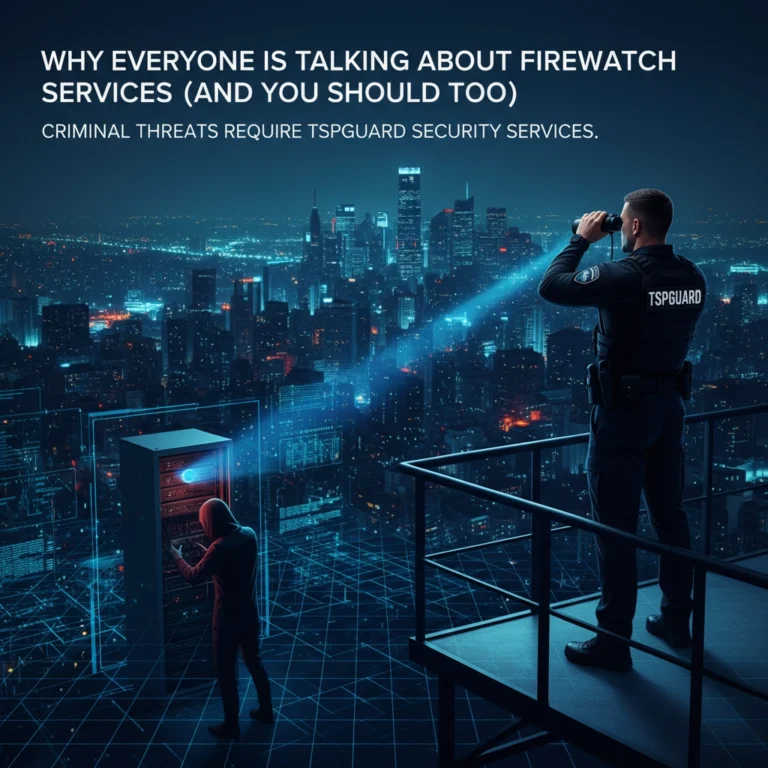Generic security solutions drain budgets while leaving critical vulnerabilities exposed. Every facility faces unique threats based on location, industry, operational hours, and valuable assets. A construction site requires fundamentally different protection than a medical facility, yet many organizations settle for one-size-fits-all approaches that deliver mediocre results at premium prices.
Customized security strategies deliver superior protection by addressing your specific risk profile. Rather than paying for unnecessary services or leaving gaps in coverage, tailored solutions maximize every dollar spent on security while providing comprehensive protection where you need it most.
1. Conduct Comprehensive Security Risk Assessments
Effective security begins with understanding your unique vulnerabilities. Our comprehensive risk assessments identify critical assets, potential entry points, and specific threats facing your facility. This evaluation serves as the foundation for all subsequent security decisions.
During assessments, we analyze your physical layout, operational patterns, and valuable assets requiring protection. High-traffic areas, secluded entry points, and valuable inventory storage locations receive particular attention. We also evaluate lighting conditions, landscaping that could provide concealment, and existing security infrastructure.
Industry-specific threats require specialized attention. Healthcare facilities face different risks than construction sites or corporate offices. Medical facilities must protect patient information, pharmaceutical supplies, and expensive equipment while maintaining accessibility for patients and staff. Construction sites need protection against theft of materials, equipment, and unauthorized access that could create liability issues.

2. Implement Layered Physical Security Measures
Effective protection requires multiple security layers working together. Perimeter security, access control, surveillance systems, and on-site personnel create overlapping protection zones that prevent, detect, and respond to security breaches.
Perimeter security establishes your first line of defense through strategic fencing, lighting, and surveillance coverage. Access control systems manage entry points with card readers, keypads, or biometric scanners tailored to your operational needs. Interior security zones protect high-value areas with additional access restrictions and monitoring.
On-site security personnel serve as the most adaptable component of layered security. Our trained guards provide real-time threat assessment, immediate response capabilities, and the flexibility to handle unexpected situations. Unlike static security measures, professional guards adapt their approach based on current conditions and emerging threats.
3. Customize Guard Services to Your Industry
Different industries require specialized security expertise and training. Our guards receive industry-specific preparation to understand unique operational requirements, compliance standards, and threat profiles affecting your sector.
Healthcare security requires understanding of HIPAA compliance, patient privacy concerns, and the unique challenges of securing environments where life-and-death situations occur daily. Guards must balance security requirements with the need for accessibility during medical emergencies. Our healthcare security services address these specialized needs through targeted training and protocols.
Construction sites present distinct challenges including equipment theft, unauthorized access, and liability concerns from potential injuries on active job sites. Our construction site security focuses on protecting valuable materials and equipment while preventing unauthorized access that could result in accidents or vandalism.

Commercial properties require security approaches that protect assets while maintaining professional appearances for clients and visitors. Our guards understand how to provide effective security without creating an intimidating environment that could negatively impact business operations.
4. Optimize Technology Integration
Modern security technology provides powerful tools, but only when properly integrated with human oversight. Smart surveillance systems, access control platforms, and monitoring equipment enhance guard effectiveness rather than replacing human judgment.
Surveillance systems customized to your facility layout eliminate blind spots while focusing coverage on high-risk areas. Motion detection, facial recognition, and automated alerts help guards respond quickly to potential threats. However, technology requires human interpretation to distinguish between legitimate activity and genuine security concerns.
Access control integration allows guards to monitor entry patterns, identify unusual access attempts, and maintain detailed logs for investigation purposes. Real-time alerts notify guards of after-hours access attempts or unauthorized entry to restricted areas.
Mobile patrol technology enables efficient coverage of large properties through GPS tracking, checkpoint verification, and incident reporting capabilities. Guards can document observations, capture evidence, and communicate with supervisors or law enforcement as situations develop.
5. Regular Security Policy Reviews and Updates
Security effectiveness diminishes over time without regular evaluation and updates. Operational changes, new threats, and evolving business requirements necessitate periodic security policy reviews to maintain optimal protection levels.
Annual security audits evaluate current procedures against emerging threats and changing operational requirements. These reviews identify outdated protocols, redundant measures, and gaps in coverage that may have developed as your business evolved.
Policy updates address new technologies, regulatory changes, and lessons learned from security incidents. Regular training ensures all security personnel understand current procedures and can implement updates effectively.
Cost optimization occurs through identifying unnecessary security measures that no longer address relevant threats. Resources can be reallocated from obsolete protections to emerging security needs, maintaining budget efficiency while improving overall effectiveness.

6. Strategic Resource Allocation Based on Risk
Effective security budgets allocate resources proportional to actual risks rather than applying uniform protection across all areas. High-value assets and vulnerable entry points receive enhanced protection, while lower-risk areas maintain basic security coverage.
Risk-based allocation begins with identifying your most valuable assets and potential impact of their compromise. Financial records, expensive equipment, and sensitive information require maximum protection. Public areas with limited valuable assets need basic monitoring and access control.
Temporal risk assessment considers how security needs change throughout different time periods. Nighttime security may require enhanced patrols and surveillance, while daytime security focuses on access control and visitor management. Special events or seasonal variations may necessitate temporary security enhancements.
Geographic risk factors influence security resource deployment across your property. Remote areas, multiple entry points, and adjacency to high-crime neighborhoods require additional attention compared to well-monitored central locations.
7. Continuous Threat Assessment and Adaptation
Security threats evolve continuously, requiring adaptive approaches that respond to changing conditions. Regular threat assessment ensures your security measures remain effective against current risks rather than yesterday's concerns.
Local crime pattern analysis identifies emerging threats in your area. Law enforcement reports, neighborhood watch information, and security incident databases provide insights into developing risks that could affect your facility.
Industry threat intelligence reveals sector-specific risks that may impact your operations. Healthcare facilities face different emerging threats than construction sites or corporate offices. Staying informed about industry-wide security trends enables proactive protective measures.
Internal incident analysis examines security events at your facility to identify patterns and improvement opportunities. Even minor incidents provide valuable information about potential vulnerabilities and the effectiveness of current security measures.

Seasonal threat variations require security adaptation throughout the year. Holiday periods may increase theft risks, while construction seasons present different challenges for building sites. Weather patterns affect visibility, access routes, and security system performance.
Secure Your Investment with Professional Expertise
Customized security strategies require professional expertise to design, implement, and maintain effectively. Generic approaches waste resources while leaving critical vulnerabilities exposed to determined threats.
TSP Security Services delivers tailored protection solutions designed specifically for your operational requirements, risk profile, and budget constraints. Our experienced team conducts thorough assessments, designs appropriate security measures, and provides ongoing support to ensure optimal protection.
Don't continue wasting money on inadequate generic security. Contact TSP Security Services today to discuss how customized protection strategies can enhance your security while optimizing your investment. Visit tspguard.com/contact or call us to schedule your comprehensive security assessment and discover the difference professional, tailored security makes for your peace of mind.








